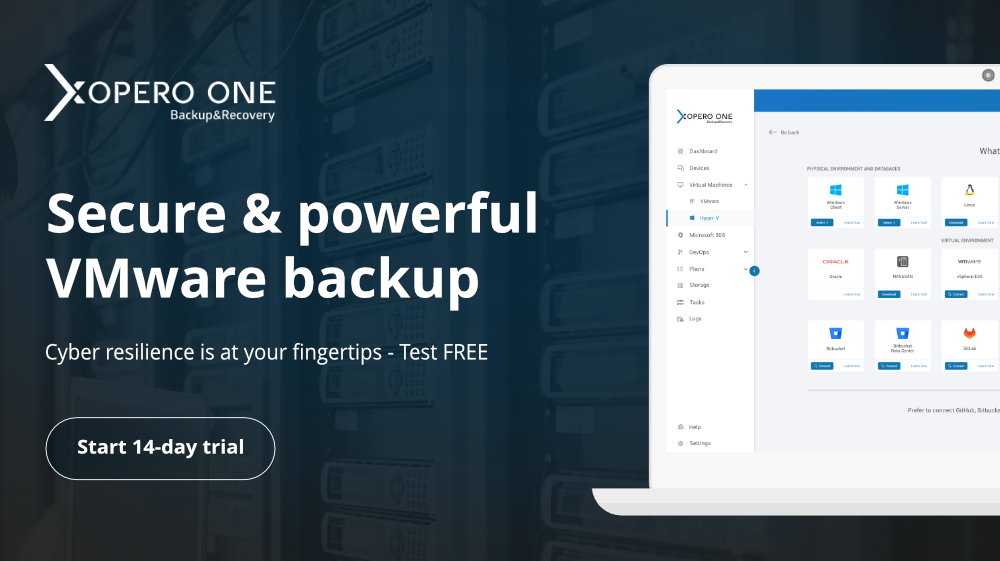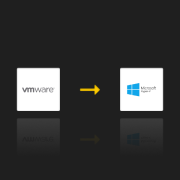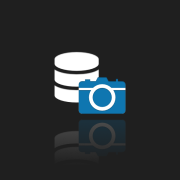
VMware and the 1/3 rule
Currently, we can risk a statement that not only global corporations but also medium and small companies decide to introduce the principle of dividing infrastructure into three parts. What does it really mean, and why do so many in the IT industry praise such a solution?
Data Center in flames?
Global corporations have been trying to protect their data in every possible way for many years now. Of course, at first, Just like everything in IT, the subject of security first had to become important from the financial and image point of view. After defective security measures began to take a heavy toll, and cases like the theft of a movie from Sony Pictures’ servers became news worldwide, something has changed in this field. Everything works in one data center and isn’t duplicated, but fire consumed everything more than once. One of the most recent examples of such a burnt server room is OVHCloud’s SBG2, which was consumed by fire in March this year. How did it happen that the extinguishing system installed in the server room failed? What was the cause of the fire, and how did it spread so quickly? Most DataCenter owners reassure their customers that their data is safe, but stories about the latest extinguishing systems, flame shut-off zones, and smoke detection systems don’t always work. You can laugh that this is finding a way to connect to the cloud of a given server room directly, but customers are not likely to laugh in the event of such incidents.
Does Data Center mean safe?
Of course, fires are just an example of a natural disaster that could hit server rooms worldwide. Another important, if not the most important, aspect is the security of both the server room itself and how the data on the servers is secured. Most red hats know perfectly well that people are always the weakest link. I think that everyone imagines a scenario in which an unauthorized person enters the building with a copied employee’s access card, the code of which is a string of 1234. Then, using the magic password “P@ssw0rd”, he logs into the server’s console and compromises it. Who can ensure that such situations do not happen? Let him first throw the proverbial stone.
Is Cloud the better way?
The problems discussed above relate to the Data Center, so let’s move everything to the cloud, and we’re safe, right? In addition, will we only pay for the resources we use, and security issues fall on the provider of such a cloud? This isn’t entirely true. First of all, cloud services are nothing more than a computer at someone else’s, i.e., in fact, the data center of a given provider. Additionally, the cloud is designed and built differently than traditional server rooms, which means it can face problems such as, for example, recently Microsoft, which was informed of a serious vulnerability in their cloud and had to suspend Cosmos DB based database services. In this case, we are completely reliant on the service provider and have to wait patiently for the problem to be resolved on his side. Of course, this is just an example of the problems that we may encounter when relying only on the cloud.
The 1/3 rule – best case scenario
For several years, companies have been focusing on cloud solutions, and they have excellent reasons for that. As we have already mentioned, most cloud providers allow you to pay only for the resources you use, so this is undoubtedly a big plus. For security reasons, however, there is a more important issue that interests companies worldwide. Of course, it is possible to buy given computing power and duplicate space in various server rooms. In addition, corporations often buy the option of having redundancy in various server rooms on several continents, which additionally protects them against downfall, but also against external and internal attacks. Only here do we come back to the problem of the lack of any control over the infrastructure itself maintaining such a cloud.
In this arrangement, let’s virtualize everything with VMware? Deciding on a virtual environment is undoubtedly a direction worth following. Thanks to the use of hypervisors, we can virtualize many servers on one physical machine. In addition, thanks to such solutions from VMware as High Availability, our virtual machines will be relatively safe even in the event of a failure of one of the servers that is part of such a virtual farm.
Of course, I still stick to the principle, let’s build our own server rooms in different places around the world and duplicate everything, but this also carries great costs. Using only one vision for infrastructure usually comes with similar security in each of these server rooms, and this, in turn, can be disastrous.
The 1/3 rule in practice
Companies that are serious about being on the market have long learned that taking care of data is a priority nowadays. Let us also add that the clients of such companies are currently so aware that they expect and check how their investments are protected. The Xopero company knows this very well and has prepared several solutions that will surely interest you. Thanks to the principle of dividing the infrastructure into three and additionally taking care of good security and backup of your data, you will be able to guarantee data security confidently.
This rule asumes the principle of dividing the infrastructure into three elements. There is nothing extraordinary about it. It’s about the best protection of your applications, data, and computing power against all eventualities. In short, it looks just like in the picture above. A given company decides to maintain only 1/3 of its own physical servers so far. It transfers the rest of its resources equally to the virtual environment, as well as to the cloud of any provider. It is also often the case that servers, products, and applications that are more important for the company’s maintenance are duplicated between each infrastructure. Thanks to this approach, even if the cloud fails and the physical server explodes, the clients of the application that are located simultaneously on physical and virtual servers and the cloud will still be available. Of course, nothing can replace a well-implemented and conducted data archiving, but here, fortunately, the Xopero company will always come to our aid.






